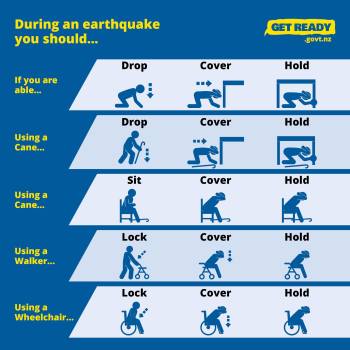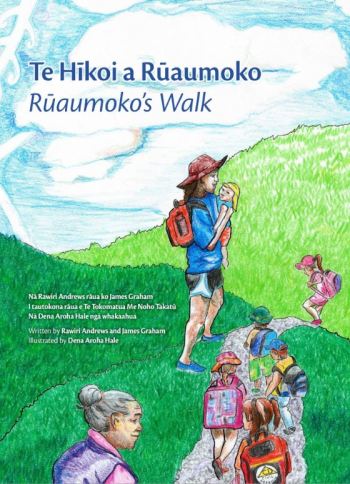
The Hikurangi Subduction Zone – so how can we be prepared
Over the past few weeks, we have taken a closer look into the Hikurangi Subduction Zone, Aotearoa New Zealand’s largest plate-boundary fault, sharing information and the research underway to better understand it. Now we focus on what it means for you at home and how you can prepare.
The Hikurangi Subduction Zone is the largest source of earthquake and tsunami hazard in New Zealand and while we don’t know when a large earthquake will happen, we can be prepared for when it does.
Read our earlier stories and learn more on the Hikurangi subduction zone:
It’s normal to feel a bit overwhelmed when thinking about natural hazards and their impacts. To help, we have compiled information and resources from our friends at the National Emergency Management Agency Te Rākau Whakamarumaru (NEMA) and EQC Toka Tū Ake.
Every step you take will help reduce the impact of a disaster on you and your family, so get started today.
What hazards should you plan for?
Depending on where you live, and work in Aotearoa New Zealand, the natural hazards you may face can vary, learning about the natural hazards in your area is the first step to understanding and managing your natural hazard risk. The most common hazards that could be linked with the Hikurangi Subduction Zone are earthquakes, tsunami and landslide – now let’s help you get prepared for them.
There is lots of useful information on the Get Ready site – advice is available in 15 languages as well as large print, Easy Read, and braille.
Earthquake preparedness
- Prepare your home. Protect your whānau. Find out how to make your home safer and stronger for earthquakes via EQC Toka Tu Ake, Be Prepared
- Make an emergency plan, have a grab bag and emergency supplies. Find out more at the Get Ready site
- Know what to do in an earthquake: Drop, Cover and Hold is the right action to take in an earthquake. It stops you being knocked over, makes you a smaller target for falling and flying objects and protects your head, neck, and vital organs.
Connect with your local civil defence emergency management group. This is where you can get vital information during an event.
Check your insurance cover. Natural hazards insurance will help you rebuild or repair your home if it is damaged by a disaster. It’s important you understand what’s covered by EQCover and your private insurance before you need it. Find out more here.
Tsunami preparedness
New Zealand’s entire coastline, and larger lakes, are exposed to tsunami hazard. Tsunami can cause devastating property damage, injuries, and loss of life.
For a local source tsunami, which could arrive in minutes, there won’t be time for an official warning. It is important to recognise the natural warning signs and act quickly. As soon as the shaking stops, move immediately to the nearest high ground, out of all tsunami evacuation zones, or as far inland as you can.
Remember, if a quake is Long or Strong, Get Gone. If you’re near the coast, or a lake, and an earthquake of any size is long (shaking lasts more than a minute), or strong (it’s hard to stand up), then get gone to higher ground or inland immediately.
Five tips that could help save you and your family in the event of a tsunami:
- Know Your Zone: find out if the places you live, work and play are in a tsunami evacuation zone.
- Have a “prep talk” with your whānau – and if you’re in a tsunami zone, work out a way to evacuate without using your car. 'Prep Talk' Video.
- Learn the natural warning signs: Long or Strong, Get Gone. Tsunami - Get Ready.
- Work out what you need in your evacuation grab bag. Work out what supplies you need.
- Practise your tsunami hīkoi (evacuation) so you know what to expect.
During a tsunami, warnings and advisories are provided by NEMA (National Emergency Management Agency) at www.civildefence.govt.nz and shared on radio and TV. You may also receive advice from your local civil defence emergency management group and receive an Emergency Mobile Alert.
Landslide preparedness
Landslides are one of the most common natural hazards to affect homes and properties in New Zealand. Some areas are at a higher risk of landslides – including areas with existing old landslides, steep slopes, drainage channels on steep slopes, stream and riverbanks, or coastal cliffs. If you have a slope on your property, check drains are clear and adequate, and that retaining walls are in good condition.
Know the warning signs so you can act quickly if you see them. Regularly inspect your property, especially after long dry spells, earthquakes, or heavy rainfall. Look for:
small slips, rock falls and subsidence at the bottom of slopes
sticking doors and window frames
gaps where frames are not fitting properly
outside fixtures such as steps, decks, and verandas moving or tilting away from the rest of the house
new cracks or bulges on the ground, road, footpath, retaining walls and other hard surfaces; and
tilting trees, retaining walls or fences.
Be alert when driving, especially where there are embankments along roadsides. Watch the road for collapsed pavements, mud and fallen rocks.
Learn more on what to do after a landslide at GetReady
Getting the kids involved
Draw: NZ Natural Hazards info and activity book for kids – colour
Draw: NZ Natural Hazards info and activity book for kids – B/W-colouring in
Read: ‘You Ready? Storybooks. This multi-lingual series takes young readers on a journey with friends through challenging weather events and natural disasters in their communities.
Thanks for joining us, over the past few weeks, on our exploration into the Hikurangi subduction zone and what it means for us. We hope you have learnt some interesting facts, and are taking some time to make sure you are prepared.


